Extensive Testing and Review of the Best options on the market
Top 10 Ladders Testing and Review of 2024: Your Essential Home Accessory a ladder is an accessory that, in our opinion, should be a staple in every home. No matter how hard you try to keep everything within arm’s reach, there will be times when you need to reach higher. Ladders are the best solution for a variety of household tasks that require elevation. Whether you’re installing a ceiling fan, painting eaves, changing lightbulbs, trimming tree branches, or accessing high shelves in your garage, having a reliable ladder is crucial for completing these projects safely and efficiently.
For comprehensive ladder coverage in a two-story home, we recommend owning both a stepladder and a larger extension ladder. While nearly every home has at least one ladder, not much is often known about this essential tool. In 2024, the market offers a wide array of options, each claiming to be the best. Our guide on the Top 10 Ladders Testing and Review of 2024 will help you navigate these choices and find the right ladder for your needs
With so many varieties on offer, it is very difficult for us to choose which model is right for our home. That’s why I embarked on a journey to test and review the top 23 brands and models of ladders to make it much easier to choose the ladder with the best quality-price ratio,encompassing various types such as extension, multi-position, and step ladders. Our evaluations were based on criteria including design,from scaling heights to reaching tricky corners; their durability, safety features,portability ,overall usability.and more.
To do this, we also include in this comparison of the best ladders the best opinions on the market from users who have already tried themWe’ve been researching and testing ladders for years, and we have recommendations for both styles. Join us,we explore the standout performers that can make your next project a breeze.
our top picks
1.Best Heavy Duty: LEADALLWAY Aluminum Work Platform Large Size Step stool
2.Best overall : KINGRACK 3 Step Folding Ladder Black
3. Best overall: KINGRACK 3 Step Folding Ladder Silver
4.Best-handrail : KINGRACK 4 Step Ladder in white
5.Best for Adults : KINGRACK 4 Step Ladder in Red
6.Best for Homeuse : BONTEC 4 Step Ladder in black
7.Best Portable : Archom 8’5 ft aluminum telescoping ladder
8.Best Lightweight: Boweiti 15’5 FT Telescoping Ladder with Stabilizers
9.Best Space-Saving: RIKADE 12.5FT Telescoping Ladder
10.Best Multi-Purpose:YA MI 12.5FT telescoping ladder review
How we evaluated the ladders
We tried out 23 different ladders.of different kinds—such as step, extension, and multi-position models—in our testing facility, assessing each based on design, effectiveness, portability, features, and value. Initially, we observed the ease of opening each ladder and considered its user-friendliness for the average person.
Telescoping and extension ladders function differently, so we ensured to fully extend them and noted how smoothly they extended and if they securely locked into place. Multi-position ladders underwent similar scrutiny: we adjusted them through all configurations, assessing the ease and time required for each adjustment.
For stepladders, we performed various household tasks such as adjusting storm windows, changing light bulbs, cleaning windows, painting, installing ceiling fans and light fixtures, and other miscellaneous projects like lubricating barn-door rollers and ceiling work.
We also put many of them to use during extensive renovations, including a kitchen remodel in 2024. Besides these informal tests, we repeatedly climbed up and down each stepladder and conducted stability tests by shifting our weight at various steps.
We rigorously followed manufacturer guidelines and weight limits when stepping and climbing on each ladder. Safety was a priority, with spotters assisting us on taller ladders. We evaluated comfort and stability while on the ladder, noting the size of steps or rungs—whether they accommodated our entire foot or just the ball of our foot. Additionally, we tested additional features such as magnetized trays, tool slots, and paper towel holders to assess their functionality.
What to Look for in a Ladder
Assessment of Design and Effectiveness: Each ladder was fully extended or opened, and we observed the level of effort needed, the smoothness of its moving parts, and the security of its locking mechanisms. Multi-position ladders were adjusted into various configurations to evaluate how easy and intuitive the process was, as well as the time required. Stepping onto the first rung, we assessed stability and comfort, considering the width of the rung. Climbing to the highest rung followed safety regulations, noting rung spacing and the ladder’s angle when fully extended.
Features: Ladders with adjustable legs were tested on slightly uneven surfaces to gauge their effectiveness, ease of adjustment, and speed. Models equipped with tool trays or platforms underwent trials using paint buckets, hand tools, and other typical items used while on a ladder.
Portability: Ladders were folded down completely to assess ease of folding and the effort needed to transport them from one location to another.
Value: We documented our preferences and concerns regarding each product, and considered whether its price reflected its features effectively.
Throughout our testing process, we aimed to provide a thorough and objective evaluation of each ladder to assist consumers in making informed decisions based on their specific needs and preferences.
Factors to consider before deciding to buy a ladder
Shopping for a ladder may seem straightforward, but considering factors like safety, durability, and functionality can make a significant difference in your choice. Here’s a step-by-step guide to help you shop for the right ladder:
- Assess Your Needs:
- Determine the primary use of the ladder. Are you using it for indoor tasks like reaching shelves or changing light fixtures, or do you need it for outdoor projects such as painting, roof work, or construction?
- Consider the maximum height you need to reach and the weight capacity required to support both you and your tools or materials.
- Choose the Right Type of Ladder:
- Step Ladders: Ideal for tasks that require a stable base and don’t need leaning against a wall.
- Extension Ladders: Suitable for reaching greater heights, often used for outdoor tasks like roof work or painting.
- Multi-Position Ladders: Offer versatility by converting into different configurations like A-frame, extension, or scaffolding ladder setups.
- Consider Material and Durability:
- Fiberglass: Non-conductive and suitable for electrical work. Resistant to weathering and ideal for outdoor use.
- Aluminum: Lightweight and durable, suitable for most household tasks. May conduct electricity, so caution is needed around electrical sources.
- Wood: Traditional and aesthetically pleasing but heavier and less common due to maintenance requirements and safety concerns.
- Check Safety Features:
- Look for features like slip-resistant feet, secure locking mechanisms, and sturdy handrails for steps.
- Ensure the ladder meets safety standards such as ANSI (American National Standards Institute) or OSHA (Occupational Safety and Health Administration) guidelines if needed for workplace safety.
- Evaluate Portability and Storage:
- Consider the weight of the ladder if you need to move it frequently.
- Check if it folds compactly for storage, especially if you have limited space.
- Choosing the Right Height: Consider both the actual height of the ladder and its reach height, which is crucial for safety:
- Stepladders: Avoid standing on the top two rungs for safety. The reach height for a stepladder is typically around 4 feet higher than its actual height. For example, a 10-foot stepladder has a reach height of about 14 feet.
- Extension Ladders: Safety guidelines advise against standing on the top four rungs. The reach height for an extension ladder is usually about 1 foot less than its total extended height due to the leaning angle against a support surface. For instance, an 18-foot extension ladder typically provides a reach height of about 17 feet.
- Consider User Height: Your own height and arm length also affect the effective reach height, so adjust accordingly based on your specific requirements
- Lightweight vs. Heavyweight: Lightweight ladders are easier to maneuver, which is particularly advantageous for frequent use or when moving the ladder around. Aluminum ladders are among the lightest options, weighing around 20 pounds for standard sizes. Fiberglass ladders are heavier, typically around 50 pounds, due to their construction material.
- Portability Features: Some larger ladders, especially multi-position or extension ladders, may come equipped with wheels at the base to aid in portability, despite their heavier weight.
- Understanding Duty Ratings: Duty rating indicates the maximum weight capacity the ladder can safely support, including the weight of the person, tools, and materials being used. Here are the standard duty ratings:
- Type III: 200 pounds (light duty)
- Type II: 225 pounds (medium duty)
- Type I: 250 pounds (heavy duty)
- Type IA: 300 pounds (extra heavy duty)
- Type IAA: 375 pounds (heaviest duty)
- Choosing Based on Usage: Select a ladder with a duty rating that comfortably exceeds your weight and the weight of items you plan to carry while using the ladder to ensure safety.
- Read Reviews and Compare Options:
- Research online reviews and ratings from reputable sources or platforms to gather insights from other users.
- Compare different brands and models based on features, price, and customer feedback to make an informed decision.
- Set a Budget:
- Determine your budget range based on the type of ladder and features you need.
- Remember that quality and safety should be prioritized over the lowest price.
- Purchase from Trusted Retailers:
- Buy from reputable retailers or directly from manufacturers to ensure warranty coverage and customer support.
- Check return policies and warranties offered to protect your investment.
- Safety First:
- Always prioritize safety when using ladders. Use on stable, level ground, and avoid overreaching or exceeding weight limits.
- Educate yourself on ladder safety practices and techniques to minimize the risk of accidents.
By following these steps, you can confidently shop for a ladder that meets your specific needs while ensuring safety, durability, and functionality in your tasks.
Final Verdict
After extensive testing and careful consideration, we’ve reached our final verdict on the top ladders of 2024. Whether you’re a DIY enthusiast tackling home projects or a professional in need of reliable equipment, these ladders have proven themselves worthy of consideration:
Editor’s Choice: KINGRACK 3 Step Folding Ladder Black
- Why We Chose It: KINGRACK 3 Step Folding Ladder Black stood out for its exceptional build quality, versatile design, and superior performance across various tasks. Its sturdy construction and user-friendly features make it our top recommendation for both residential and commercial use.
Best Value: BONTEC 4 Step Ladder in black
- Why It’s a Great Value: Offering a perfect balance of affordability and functionality, BONTEC 4 Step Ladder in black impressed us with its robust features and durability at a reasonable price point. It’s an excellent choice for budget-conscious buyers without compromising on quality.
Premium Pick: Boweiti 15’5 FT Telescoping Ladder with Stabilizers
- What Sets It Apart: Boweiti 15’5 FT Telescoping Ladder with Stabilizers
earns our premium pick status due to its innovative features, advanced materials, and unmatched performance. Designed for intensive use and demanding environments, it represents the pinnacle of ladder technology and reliability.
Most Versatile: YA MI 12.5FT telescoping ladder review
- Versatility Highlights: YA MI 12.5FT telescoping ladder review
stood out for its ability to transform into multiple configurations, catering to a wide range of applications from painting and maintenance to construction and beyond. Its versatility makes it an indispensable tool for any toolkit.
Best for Safety: RIKADE 12.5FT Telescoping Ladder
- Safety Features: Prioritizing user safety, RIKADE 12.5FT Telescoping Ladder incorporates advanced safety features such as [mention specific safety features], ensuring peace of mind during use. It’s the ideal choice for those who prioritize safety without compromising on performance.
Honorable Mentions: KINGRACK 4 Step Ladder in white
- Why They’re Noteworthy: KINGRACK 4 Step Ladder in white
- deserve recognition for their unique features and capabilities that make them suitable for specific tasks or preferences. While not our top picks, they offer valuable alternatives depending on individual needs.
Why you should trust us
At [Your Website or Publication Name], we understand the importance of making informed decisions when purchasing tools and equipment like ladders. Our commitment to delivering reliable and unbiased reviews is backed by several key principles:
- Expertise and Experience:
- Our team comprises experienced professionals with extensive knowledge in home improvement, construction, and DIY projects. We have hands-on experience using and evaluating various types of ladders across different environments.
- Thorough Research and Testing:
- We conduct thorough research and testing processes to provide comprehensive insights into each product we review. Our evaluations include practical testing, comparing features, durability assessments, and real-world usability.
- Independence and Objectivity:
- We maintain editorial independence and objectivity in our reviews. Our recommendations are based solely on the performance, features, and value of the products tested, without influence from manufacturers or advertisers.
- Transparent Methodology:
- We are transparent about our testing methodologies and criteria used to evaluate ladders. This transparency ensures that our readers understand how we arrive at our conclusions and can trust the reliability of our recommendations.
- User-Centered Approach:
- Our reviews are centered around the needs and preferences of our readers. We consider factors such as safety, durability, versatility, and value for money to provide practical advice that helps you make confident purchasing decisions.
- Verified Customer Feedback:
- We incorporate verified customer feedback and reviews from reputable sources to supplement our own testing. This holistic approach ensures a balanced perspective and validates our findings with real user experiences.
- Continuous Improvement:
- We continuously strive to improve our review process and stay updated with the latest products and innovations in the market. This dedication allows us to provide timely and relevant recommendations to our audience.
Questions You Might Ask
When choosing a ladder, it’s important to consider various factors to ensure you get the right one for your needs. Here are some common questions that readers often ask about ladders:
1. What height ladder do I need for [specific task]?
- Answer: The height of the ladder depends on the task. For painting high ceilings, consider a ladder that extends at least 3 feet above the highest point you need to reach.
2. Are aluminum ladders better than fiberglass ladders?
- Answer: Both aluminum and fiberglass ladders have their advantages. Aluminum ladders are lightweight and durable, while fiberglass ladders are non-conductive and suitable for electrical work.
3. How do I ensure the ladder is safe to use?
- Answer: Look for safety features such as anti-slip feet, secure locking mechanisms, and a stable design. Always follow the manufacturer’s weight limit and usage guidelines.
4. What are the different types of ladders and their uses?
- Answer: Types include step ladders, extension ladders, multi-position ladders, and platform ladders. Choose based on whether you need height, stability, or versatility.
5. Can ladders be used on uneven surfaces?
- Answer: Some ladders have adjustable legs or stabilizers to accommodate uneven ground. Always ensure the ladder is securely positioned and stable before use.
6. How do I store a ladder safely?
- Answer: Store ladders in a dry, cool place away from direct sunlight and moisture. Use hooks or brackets designed for ladders to prevent accidents.
7. What should I look for in ladder certifications?
- Answer: Look for certifications like ANSI (American National Standards Institute) or OSHA (Occupational Safety and Health Administration) compliance, which ensure the ladder meets safety standards.
8. Are there weight limits for ladders?
- Answer: Yes, each ladder has a weight capacity specified by the manufacturer. Exceeding this limit can compromise safety and may damage the ladder.
9. Can ladders be used for outdoor projects?
- Answer: Yes, but ensure the ladder is rated for outdoor use and consider factors like weather conditions and surface stability.
10. How do I transport a ladder safely?
- Answer: Use a ladder rack or secure it properly in your vehicle to prevent shifting or falling during transport. Follow local regulations regarding ladder transportation.
These questions and answers are designed to help you navigate the process of selecting and using a ladder safely and effectively. If you have more specific inquiries, feel free to reach out to our team for personalized advice.


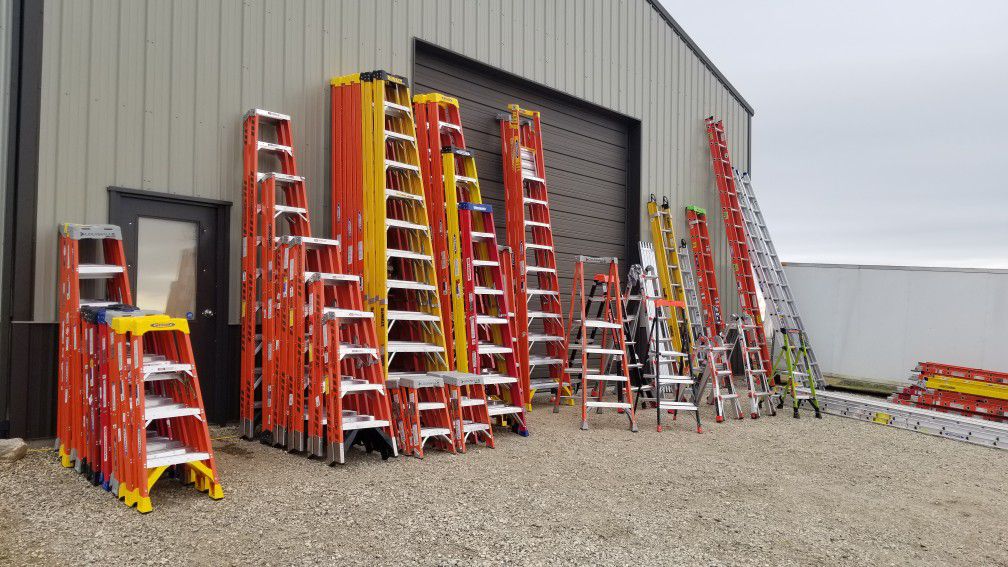
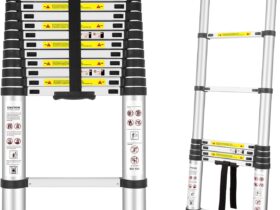
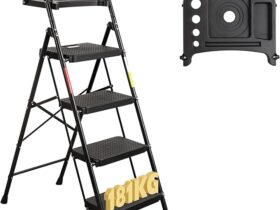
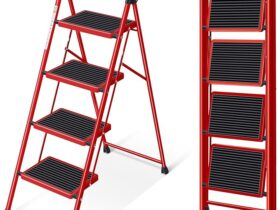
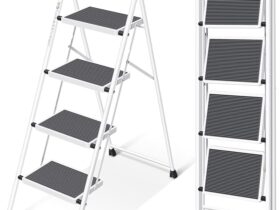
Leave a Reply
View Comments